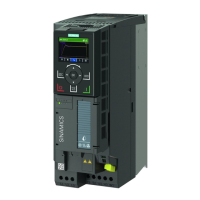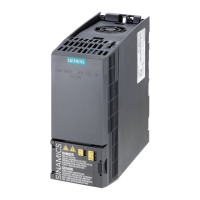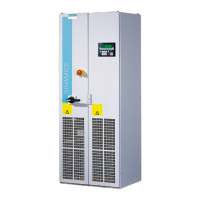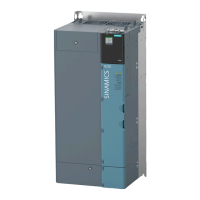Advanced commissioning
7.5 Motor control
Advanced settings
K
p
- and T
n
adaptation
The K
p
- and T
n
adaptation suppresses possible speed controller oscillations. During basic
commissioning, the inverter optimizes the speed controller using the "rotating measurement"
function. If you have performed the rotating measurement, then the K
p
- and T
n
adaptation has
been set.
You can find additional information in the List Manual, function block diagram 6050.
The droop function reduces the speed setpoint as a function of the torque setpoint.
Figure 7-22 Effect of droop in the speed controller
The droop function ensures even torque distribution between two or more mechanically
coupled drives. Load distribution using the droop function also masters soft mechanical
couplings or a permanent speed difference as a result of slip.
Preconditions for using the droop function
● All coupled drives must be operated in vector control, with or without an encoder.
● Only a one common ramp-function generator may be used for mechanically coupled
drives.
Speed controller I torque output
p1488
(factory setting: 0)
0: Droop feedback not connected
1: Droop from the torque setpoint
2: Droop from the speed control output
3: Droop from the integral output, speed controller
p1489
(factory setting: 0,05)
A value of 0.05 means: At the rated motor torque, the inverter reduces the speed by 5% of
the rated motor speed.
Droop feedback speed reduction
Droop feedback enable (factory setting: 0)
You can find additional information in the List Manual, function block diagram 6030.
Converter with control units CU240D-2
156 Operating Instructions, 04/2015, FW V4.7.3, A5E34262100B AB

